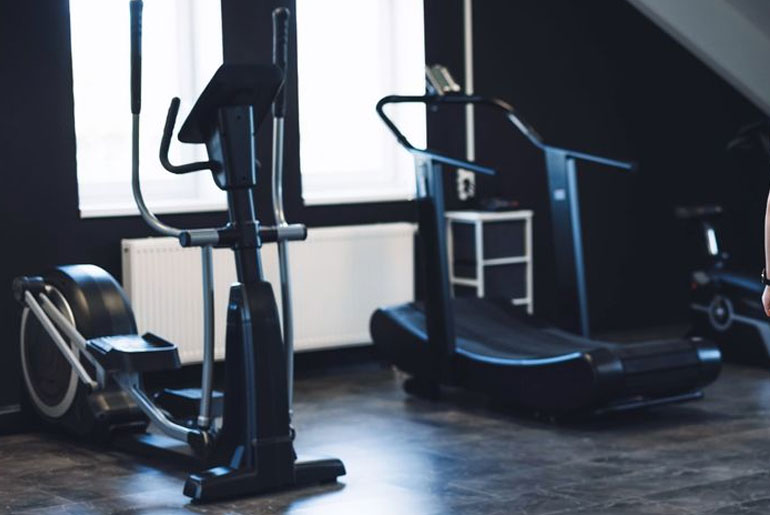Cardio machines are fitness devices designed to improve cardiovascular health, endurance, and overall fitness by simulating various forms of aerobic exercise. Common types include treadmills, stationary bikes, ellipticals, rowers, and stair climbers. These machines provide controlled, low-impact exercises that elevate heart rate, helping to burn calories, enhance stamina, and support weight loss. Many cardio machines come with adjustable resistance levels, speed settings, and built-in programs for users to tailor their workouts to their fitness goals. They offer a convenient, efficient way to engage in cardiovascular exercise indoors, regardless of weather conditions.
Choosing between an elliptical and a treadmill depends on your personal fitness goals, preferences, and any specific physical concerns you may have. Here are the key benefits of using an elliptical over a treadmill:
1. Low-Impact on Joints:
- Elliptical: The elliptical is a low-impact cardio machine, meaning that your feet stay on the pedals, minimizing joint stress. This makes it an excellent choice for beginners, those recovering from injury, or individuals with joint problems such as arthritis.
- Treadmill: While walking on a treadmill is gentler than running on pavement, it’s still considered higher impact than the elliptical due to the repeated pounding on your joints.
2. Full-Body Workout:
- Elliptical: The elliptical provides a full-body workout as it engages both the upper and lower body. The handlebars move back and forth, allowing you to work your arms, chest, and back while engaging your legs and core. This results in a more comprehensive calorie burn and muscle toning.
- Treadmill: The treadmill primarily targets the lower body muscles (quadriceps, glutes, hamstrings, and calves) and focuses on cardiovascular endurance. To activate more upper-body muscles, you’d need to engage in running with arm movements or use the incline, which can also increase stress on your knees.
3. Variety of Intensity:
- Elliptical: The elliptical allows for a smooth, circular motion that can be varied by adjusting resistance levels. You can also alternate between forward and backward motions to target different muscles.
- Treadmill: On a treadmill, you can adjust the speed and incline to increase intensity. Running at high speeds or steep inclines can help with building cardiovascular endurance, but this can also be tough on the joints, especially for beginners.
4. Ideal for Rehab and Recovery:
- Elliptical: Because it’s low-impact, the elliptical is often recommended for people who are recovering from injuries or have physical disabilities, such as cerebral palsy or multiple sclerosis. It’s a great option for improving cardiovascular health while limiting strain on the body.
- Treadmill: While a treadmill can be used for walking (a relatively low-impact activity), running or brisk walking on a treadmill can exacerbate knee or hip problems for some people.
5. Muscle Activation:
- Elliptical: The elliptical engages more muscles due to the full-body movement, offering more strength-building benefits for both the upper and lower body.
- Treadmill: The treadmill is great for building lower-body muscle but doesn’t provide significant upper-body activation unless you choose to engage your arms while running.
6. Better for Interval Workouts:
- Elliptical: The elliptical is ideal for those looking to incorporate high-intensity interval training (HIIT) without the risk of joint stress. You can quickly increase resistance to challenge your heart rate without worrying about the impact on your knees and hips.
- Treadmill: While interval training is possible on a treadmill (via speed or incline changes), the impact from running might not be ideal for everyone, especially if you have joint concerns or are new to exercising.
When to Choose an Elliptical:
- If you have joint pain or are prone to injuries, the elliptical is an excellent option because it’s gentler on the body.
- For full-body conditioning, an elliptical offers a more comprehensive workout by targeting both upper and lower body muscles.
- For rehab or recovery, the low-impact nature makes the elliptical a safer choice.
When to Choose a Treadmill:
- If you’re looking for a pure cardio workout focused on improving endurance, a treadmill (particularly at higher speeds and inclines) is great for challenging the cardiovascular system.
- If you prefer walking or running as your main form of exercise and have no significant joint concerns, the treadmill may suit you better.
Ultimately, the best machine is the one you enjoy using most and can safely use consistently. If you like variety, alternating between the elliptical and treadmill can provide a balanced, effective cardio routine.
Disclaimer:
The information contained in this article is for educational and informational purposes only and is not intended as a health advice. We would ask you to consult a qualified professional or medical expert to gain additional knowledge before you choose to consume any product or perform any exercise.







